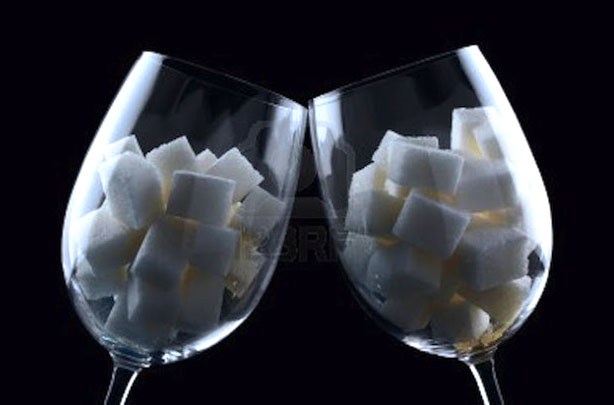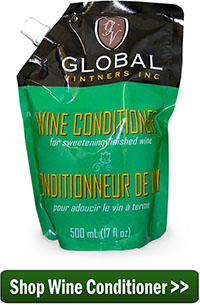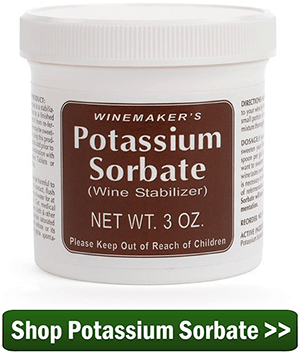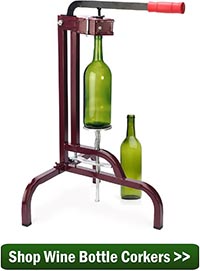 I am making European Select Chardonnay. I will be ready to bottle in a week or so. I have not done the stabilization & clarification step yet, which is when I would normally back sweeten wine. Can I complete all the steps, bottle half of it, and THEN sweeten the other half? Will the potassium sorbate added at step 4 or adding some potassium metabisulfite hinder refermentation from adding wine conditioner for sweetness? Or is the your wine sweetener non-fermentable?
I am making European Select Chardonnay. I will be ready to bottle in a week or so. I have not done the stabilization & clarification step yet, which is when I would normally back sweeten wine. Can I complete all the steps, bottle half of it, and THEN sweeten the other half? Will the potassium sorbate added at step 4 or adding some potassium metabisulfite hinder refermentation from adding wine conditioner for sweetness? Or is the your wine sweetener non-fermentable?
Betsy L.
Wisconsin (Go Pack, Go)
—–
Hello Betsy,
Thank you for your questions about how to back sweeten wine.
Your idea of – bottling half; then sweetening half; then bottling – is a great one. I have done this more than once. I’ve even divided one of my homemade wines into dry/semi-dry/medium. I think this is a great way to back sweeten wine because if gives you so many more options.
I have done this more than once. I’ve even divided one of my homemade wines into dry/semi-dry/medium. I think this is a great way to back sweeten wine because if gives you so many more options.
And it’s simple to do. You should have no problems pulling it off. With your 30 wine bottles in play, there’s nothing wrong with giving them some variety by way of sweetness. As you have suggested you are bottling some of the wine, sweetening what’s in bulk than bottling that.
This method of back sweetening a wine works particularly well when you plan on gifting it or sharing it with friends. It gives you a way to tailor the gift to the person you are giving it to. Quite often we want to share our wine with family and friends who are not wine drinkers. Giving them a bottle of wine that is not bone-dry makes good sense.
As for your second question on the potassium sorbate: as long as the fermentation has completed and the wine has completely cleared, the potassium sorbate or potassium bisulfite will stop a re-fermentation from occurring in your wine bottles when back sweetening wine, but it is important that the wine be clear first, regardless of what day in the steps you are on. Wait an extra day or two if necessary. It won’t compromise your homemade wine in any way.
fermentation has completed and the wine has completely cleared, the potassium sorbate or potassium bisulfite will stop a re-fermentation from occurring in your wine bottles when back sweetening wine, but it is important that the wine be clear first, regardless of what day in the steps you are on. Wait an extra day or two if necessary. It won’t compromise your homemade wine in any way.
I would also suggest using our Wine Conditioner for the purpose of back sweetening the wine, just as you were planning. Wine conditioner is easy to use and has additional sorbate to help stabilize the wine. It will not adversely affect the wine in any way and will help to assure that your homemade wine does not experience a re-fermentation.
You can also back sweeten wine just by adding plain ole sugar. But if  you decide to do this, I would highly recommend that you also add another 1/2 dose of potassium sorbate to the wine (1/4 teaspoon per gallon) in addition to what was with your wine ingredient kit. For others reading this, if you have not added any potassium sorbate from a kit or what-have-you, then add a full dose of potassium sorbate (1/2 teaspoon per gallon) when you back sweeten wine.
you decide to do this, I would highly recommend that you also add another 1/2 dose of potassium sorbate to the wine (1/4 teaspoon per gallon) in addition to what was with your wine ingredient kit. For others reading this, if you have not added any potassium sorbate from a kit or what-have-you, then add a full dose of potassium sorbate (1/2 teaspoon per gallon) when you back sweeten wine.
Happy Winemaking,
Ed Kraus
—–
Ed Kraus is a 3rd generation home brewer/winemaker and has been an owner of E. C. Kraus since 1999. He has been helping individuals make better wine and beer for over 25 years.

Thank you for your excellent tips and information newsletter.My son and I both enjoy your valuable contributions to making great wines
Sincerely Thanks Phil
We have just just recently started experimenting with wine making. On our first batch, I split the sweetness into three levels like you mentioned. I think it would be easier if you could go by the reading on your hydrometer as you sweeten. Are there suggested readings(ie: 1.020 for semi-sweet, 1.040 for sweet, etc.) to use as a gauge when sweetening? Also, how much sweeter will a wine be after bottling and aging a few months. I am concerned about getting it just right and then be too sweet a few months later. I also enjoy reading the tips as well as others comments and experiences!
Thanks
Suzanne
Suzanne, While there are certain ranges on the specific gravity scale that one could consider sweet verses dry, these ranges are so narrow on the typical wine hydrometer that it would be very hard to accurately apply them to sweetening a wine. Yes, you are correct, you have to be careful with how much sweetener you add when bottling homemade wine. This is because the wine is going to develop into something much different during aging. Most noticeably, will be the mellowing of its harsher characteristics. Below we have posted a couple of article that will discuss this in more detail.
Sweetening Your Wine
http://www.eckraus.com/blog/sweetening-a-wine-before-or-after-aging
http://www.eckraus.com/blog/using-a-hydrometer-to-adjust-a-wines-sweetness
Hi
Novice here.
I have 18 gallons of Apple wine brewing back in Minnesota.
Also 4.5 gallons of apple Brandy. (Brandy from freeze distilling 10 gallons of our wine.)
We are going to try other fruit wines & fruit blends this season. So back sweetening???
My quick question:
What do you use to sweeten the wine? Just sugar? Or some sort of liquid sweetener?
Thanks!
Bob, after you stabilize your wine you can back sweeten a number of ways. Take a look at the articles I have posted below.
Making Sweet Wine
http://www.eckraus.com/wine-making-sweet
Back Sweetening after fermentation or Before Bottling?
http://www.eckraus.com/blog/back-sweetening-wine-after-fermentation-or-before-bottling
Thanks for your tricks and tips all the time telling to your subscribers and wine enthu without keeping anything in small letters.I and my son are your ie Ed Kraus sincere followers for last 15 years.And really enjoy making different fruit ( Indian and American fruits) wine without a single failure.So far we have made 18 different fruit wines in India and give our knowledge to friends and relatives.It is very dificult to get quality equipments and ingradients. like the one you make.
Sweetening the wine in parts we do it in the small bottles well before it is served to the different wine lovers.Also the flavours can be added by adding seperately through already made wines.Your basic introduction is so nice that we can solve any problem just by common thinking.So is the case about making exotic wines on our own..
Making my first batch of wine in years. The wine did not seem to produce CO2 when racked into carboy and left no air bubbles produced? Wine according to instructions is finished now, tastes like wine not sure if it has an alcohol content.
Lisa, it is not that uncommon for a fermentation to not produce a lot of bubbling. We have spoke with many customers that will say there wine did not ferment because they did not see activity but after taking a hydrometer reading will find that the fermentation is actually complete. If your final specific gravity reading is .998 or less, the fermentation is complete and all of the sugar in the juice is now alcohol.
Hi… We are almost ready to back sweeten & filter our pineapple wine, but wondered if we should do something to combat the yeasty smell it has before doing so?
Michele, the article posted below will explain why this happens and what you can do about it.
My Wine Smells Like Yeast
http://blog.eckraus.com/yeasty-smell-in-wine
How or do I use to stop fermentation and not back sweeten if it’s not needed?
Jason, there really is no practical way to stop a fermentation before it completes. Stopping a wine fermentation is not normal. What is normal is letting the wine fermentation continue until all the sugars in the wine must have been consumed by the wine yeast.If you prefer your homemade wines sweet, you would add sugar to taste at bottling time, and then add potassium sorbate to eliminate a chance of re-fermentation in the wine bottle. For more information, please take a look at the article posted below.
How To Stop A Fermentation
https://blog.eckraus.com/how-to-stop-a-wine-fermentation
how long can I wait to back sweeten wine before racking? its been sitting in 5 gal. jug last clear stage for 2 yrs,
C.C., you can back-sweeten the wine anytime after the fermentation completes and the wine is clear.
I did a honey Apple wine. However I thought I had added enough sugar. My alcohol content is 5 %. I haven’t used any stabilizer and I want to know if I can referment the wine by placing it back in my primary and adding more honey? Will it start back up on its own or will I need to add yeast again.I
Thanks,
Mary
Mary, If you have not added stabilizer or sulfites, you can add more sugar to increase the alcohol. If you have added sulfites, it more than likely damaged the yeast so you will need to add a new packet.